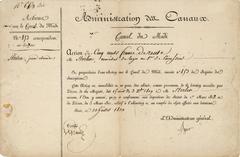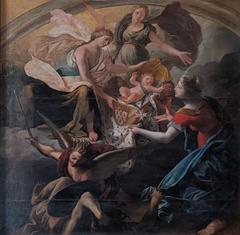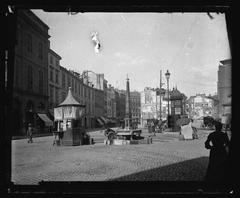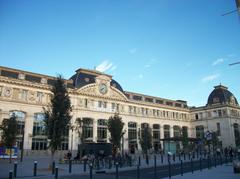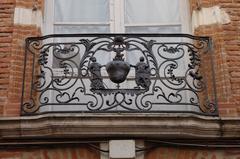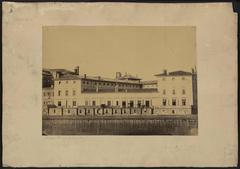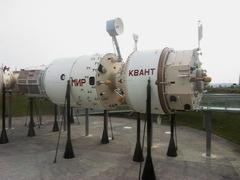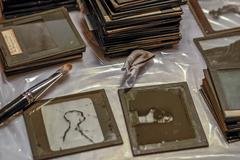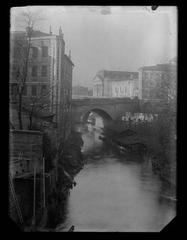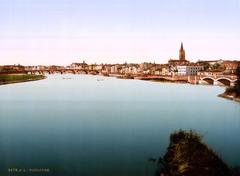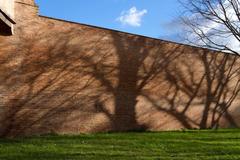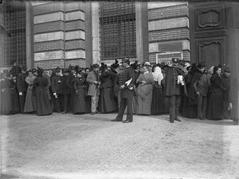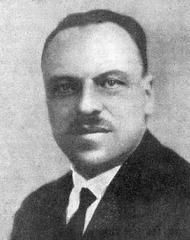
Saint-Cyprien Visiting Hours, Tickets, and Guide to Historical Sites in Toulouse
Date: 04/07/2025
Introduction
Saint-Cyprien – République, located on the left bank of the Garonne River in Toulouse, France, is a district where centuries-old history meets a thriving contemporary scene. Renowned for its medieval landmarks, lively markets, multicultural atmosphere, and evolving cultural institutions, Saint-Cyprien offers visitors a distinctive perspective on Toulouse’s heritage and daily life. This comprehensive guide provides up-to-date information on visiting hours, ticketing, accessibility, and essential travel tips—helping you explore Saint-Cyprien’s historical sites, vibrant community, and cultural attractions to the fullest. For further details and updates, consult official tourism and cultural websites (Saint-Cyprien Guide, Toulouse Tourism, Metro Toulouse).
Table of Contents
- Historical Overview
- Visiting Saint-Cyprien: Practical Information
- Notable Landmarks and Heritage Sites
- Frequently Asked Questions (FAQ)
- Plan Your Visit and Explore More
Historical Overview
Early Origins and Medieval Foundations
Saint-Cyprien is among the oldest quarters of Toulouse, with the earliest records dating to 1177 under the name “vila sancti Cypriani.” The neighborhood’s history is closely tied to ancient infrastructure like the Roman “Aqueduc de la reine Pédauque,” remnants of which can still be seen on Rue des Arcs-Saint-Cyprien. The district developed as a faubourg—an outlying suburb—outside the city’s medieval walls. Landmarks such as the Church of Saint-Nicolas and the Hôtel-Dieu Saint-Jacques played key roles, serving spiritual, social, and medical functions for both locals and pilgrims traveling the Camino de Santiago.
Urban Growth and the Challenge of Floods
Bordered by the Garonne, Saint-Cyprien flourished but also faced recurring natural threats. Notably, the catastrophic flood of 1875 reshaped the neighborhood, leading to the construction of embankments and stricter building codes. Over the centuries, public spaces like Place Saint-Cyprien and Rue de la République evolved alongside the community.
Revolutionary and Modern Eras
The district briefly became its own commune, named “La Gaîté,” during the French Revolution. Military installations—including the Arsenal des Pyrénées—highlighted its strategic importance, especially during the Napoleonic wars. The 19th and 20th centuries brought further urbanization, waves of immigration (notably Spanish Republicans), and modernization projects such as the Cité Roguet housing complex. Despite these changes, Saint-Cyprien has retained its convivial, multicultural spirit.
Contemporary Cultural Life
Today, Saint-Cyprien is known for its green spaces like Prairie des Filtres, a vibrant café and market culture, and major cultural institutions. Les Abattoirs, a contemporary art museum, and the Centre Culturel Saint-Cyprien regularly host exhibitions, concerts, and workshops. Annual festivals such as Festa Tudo Bem embody the district’s cosmopolitan identity.
Visiting Saint-Cyprien: Practical Information
Landmark Hours and Tickets
- Église Saint-Nicolas: Open daily, 9:00 AM–6:00 PM. Free entry; donations welcome.
- Hôtel-Dieu Saint-Jacques: Guided tours Tuesday–Sunday, 10:00 AM–5:00 PM. Tickets: €7 adults, €4 reduced, free for under 18s.
- Les Abattoirs (Contemporary Art Museum): Wednesday–Monday, 11:00 AM–6:00 PM. Tickets: €10 full, €6 reduced. lesabattoirs.org
- Marché Saint-Cyprien: Tuesday, Thursday, Saturday, 7:00 AM–1:00 PM. Free entry.
Accessibility and Transport
Saint-Cyprien is easily accessible via the Saint-Cyprien – République metro station on Line A, with additional bus lines and cycling paths. Most main sites have facilities for visitors with reduced mobility.
Guided Tours and Events
Local guides and cultural centers offer walking tours focusing on Saint-Cyprien’s history, street art, and architecture. The Centre Culturel Saint-Cyprien lists current exhibitions, concerts, and workshops. Annual events such as the Rio Loco festival at Prairie des Filtres highlight the area’s multicultural roots.
Travel Tips
- Arrive early on market days to experience the lively Marché Saint-Cyprien.
- Combine your visit with a walk across Pont Neuf to Toulouse’s historic center.
- Explore nearby green spaces like Prairie des Filtres and Jardin Raymond VI for relaxation and scenic views.
- Reserve tables at popular local restaurants, especially on weekends.
Notable Landmarks and Heritage Sites
- Église Saint-Nicolas: 12th-century Romanesque church at the heart of the district.
- Hôtel-Dieu Saint-Jacques: UNESCO-listed historic hospital and museum.
- Les Abattoirs: Renowned museum of modern and contemporary art.
- Château d’Eau: Historic water tower turned photography gallery; open Wednesday–Sunday, 12:00 PM–6:00 PM; free entry.
- Remparts de Saint-Cyprien: Restored defensive walls offering panoramic views.
- La Grave Hospital and Dome: Iconic 18th-century dome; the gardens and exterior are accessible to visitors.
- Marché Saint-Cyprien: Covered market with regional produce and lively community atmosphere.
- Fontaine de la Place Olivier: Memorial fountain commemorating the 1875 flood.
Parks and Green Spaces
- Jardin Raymond VI: Riverside park featuring diverse flora, children’s play areas, and contemporary sculptures. Open daily, free entry.
- Prairie des Filtres: Popular riverside park for picnics, open-air events, and views of the Garonne.
Markets and Gastronomy
- Marché de Saint-Cyprien: Open Tuesday, Thursday, and Saturday mornings, offering fresh produce, cheeses, and regional specialties.
- Local Eateries: Notable options include Le Court Circuit, Cacaofages, L’Extrapade, Le Solaneko, Le P’tit Louis, and L’Estaminot.
Street Art and Urban Culture
Saint-Cyprien’s urban landscape features colorful murals and creative installations, particularly around Place de l’Estrapade and Rue de la République. The district’s multiculturalism is reflected in its shops, galleries, and festivals.
Frequently Asked Questions (FAQ)
Q: What are the opening hours of Marché Saint-Cyprien?
A: The market operates Tuesday, Thursday, and Saturday from 7:00 AM to 1:00 PM.
Q: Do I need tickets for the main sites?
A: Entry to Église Saint-Nicolas and Château d’Eau is free. Les Abattoirs and Hôtel-Dieu Saint-Jacques require tickets for exhibitions and guided tours.
Q: Is Saint-Cyprien accessible by public transport?
A: Yes, via metro (Line A), buses, and cycling paths.
Q: Are guided tours available?
A: Yes, several operators and cultural centers offer guided history and art tours. Check local listings for details.
Q: What are the best photography locations?
A: The dome of La Grave at sunset, Pont Neuf, Jardin Raymond VI, and the district’s murals are highlights.
Plan Your Visit and Explore More
Saint-Cyprien’s blend of medieval heritage, bustling markets, vibrant street life, and contemporary art makes it a must-visit district in Toulouse. Plan your trip around market days, explore nearby parks, and take advantage of guided tours for deeper insights. For real-time updates and personalized recommendations, download the Audiala app and follow local cultural calendars.
References and External Links for Further Information
- Saint-Cyprien Guide
- Toulouse Tourism – Musée des Abattoirs
- Metro Toulouse – Saint-Cyprien République Metro Station
- Jardin Raymond VI
- Guide Gourmand du Quartier Saint-Cyprien
- Toulouse Secret: Festivals and Events
- Audiala App
For the best experience in Saint-Cyprien, combine historical exploration, culinary adventures, and cultural immersion. Check official websites before your visit for the latest opening hours, ticket details, and special events.


